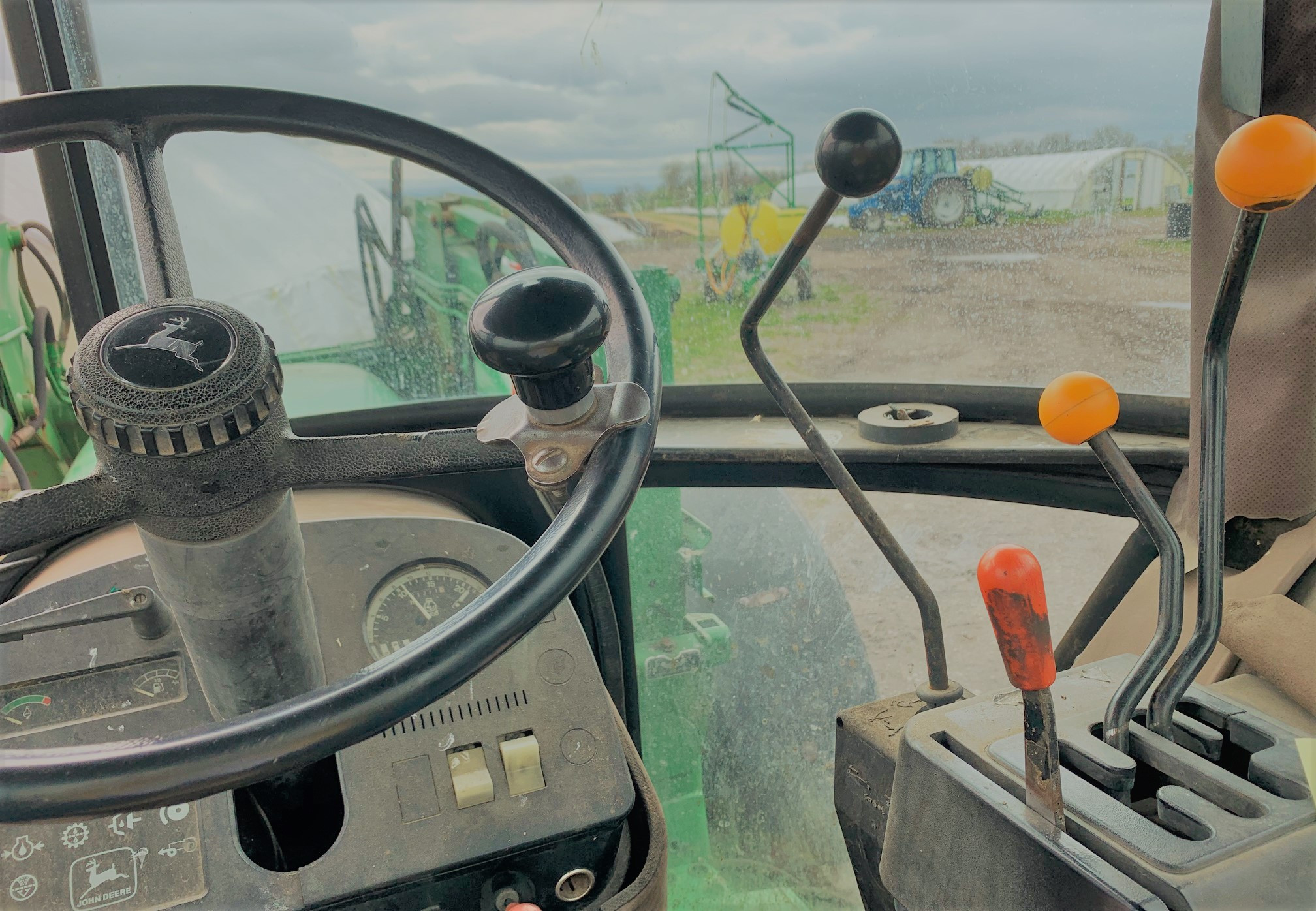News

Tractors and Machinery Operated by Multiple Users: How to Clean and Disinfect during COVID-19 - May 1, 2020
By Jim Carrabba
NYCAMH Agricultural Safety Specialist
Often more than one person operates the same tractor or piece of machinery on a farm operation in the course of a day's or week's work. Driving shared tractors and machinery may put operators at risk of contracting COVID-19 if care is not taken to clean and disinfect them thoroughly between operators.
The virus that causes COVID-19 is thought to spread mainly from person to person through respiratory droplets produced when an infected person coughs, sneezes or talks. Spread is more likely when people are in close contact with one another (within about 6 feet), according to the Centers for Disease Control. People can also become sick when touching their eyes, nose and mouth after contact with contaminated surfaces. Depending on the surface, the virus can remain viable for hours or even days.
One user per machine is best, but may not be possible
When possible, assign one operator per tractor, vehicle, or other mobile piece of equipment while COVID-19 remains prevalent. If equipment must be operated by multiple people, then it must be properly cleaned AND disinfected at the beginning and end of each shift, or between different operators in the same shift. This applies to open station tractors and other equipment as well.
Use an equipment sanitation checklist and log to track cleaning and disinfecting activities
One can be downloaded from: https://agsafebc.ca/wp-content/uploads/2020/04/2020-04-02-Sanitation-Checklist-Tractor-Mobile-Equipment-Vehicle-AgSafe.pdf
Items that must be cleaned and disinfected
Clean and disinfect the operator's compartment thoroughly. Pay close attention to all high touch surfaces such as grab handles, railings, door handles, steering wheels, dashboards, levers, knobs, buttons, switches, touch screens, seats, and armrests.
Cabin filtration systems will not protect you from COVID-19
Cabin filters will not protect you from the virus. While in the cab, you could be expelling the virus through your breath, cough or sneeze. The filtration system could be recirculating the virus inside of the cab. Where possible, leave windows open for ventilation.
How to properly clean and disinfect tractors and machinery
CLEANING: Removes visible dirt and must be done first, otherwise disinfecting will not work. Cleaning is done with water, detergents, and steady friction from a cleaning cloth, brush or sponge.
DISINFECTING: Kills viruses and bacteria. A disinfectant can only be applied to surfaces, never on your skin. Use disinfectants that are appropriate for the specific surface.
Products to use for disinfection:
Diluted household bleach
To make a bleach solution, mix:
- 5 tablespoons (1/3rd cup) bleach per gallon of water, or
- 4 teaspoons bleach per quart of water
Follow manufacturer's instructions for application and proper ventilation. Check to ensure the product is not past its expiration date. Never mix household bleach with ammonia or any other cleanser. Unexpired household bleach will be effective against coronaviruses when properly diluted.
EPA-registered household disinfectants
A list of approved products effective against COVID-19 can be found at the EPA website: : https://www.epa.gov/pesticide-registration/list-n-disinfectants-use-against-sars-cov-2
Alcohol solutions can also be used
Ensure solution has at least 70% alcohol
During cleaning/disinfection:
-
Wear splash proof googles and nitrile or neoprene gloves while working with disinfectants that spray or could splash.
-
If the surface is dirty, remove visible dirt and debris and clean the surfaces using detergent or soap prior to disinfection.
- Always read the label carefully and follow disinfection product manufacturer's instructions.
- Allow the disinfectant to remain on the surface for its required contact time before wiping the surface dry.
After cleaning/disinfection:
-
After gloves are removed, immediately wash hands thoroughly with soap and for at least 20 seconds and dry with a clean paper towel.
- All disposable materials must be placed into a leak-proof garbage bag and sealed for disposal.
Resources:
How to Protect Yourself and Others from Coronavirus
https://www.cdc.gov/coronavirus/2019-ncov/prevent-getting-sick/prevention.html
Cleaning and Disinfecting Your Home
https://www.cdc.gov/coronavirus/2019-ncov/prevent-getting-sick/disinfecting-your-home.html
Cleaning and Disinfecting Your Construction Equipment Cabs
The New York Center for Agricultural Health and Medicine (NYCAMH) is a private non-profit center dedicated to enhancing agricultural and rural health by preventing and treating occupational injury and illness. You can find out more about our health and safety resources for the agricultural community as they relate to the COVID-19 pandemic at: www/nycamh.org/covid-19/

